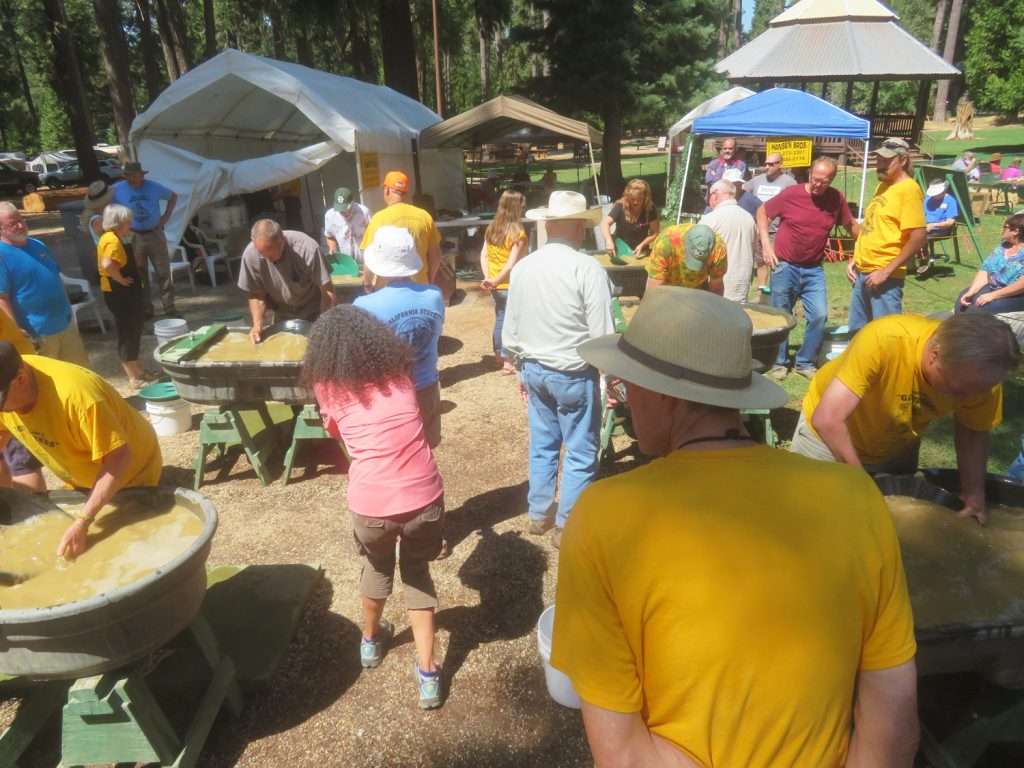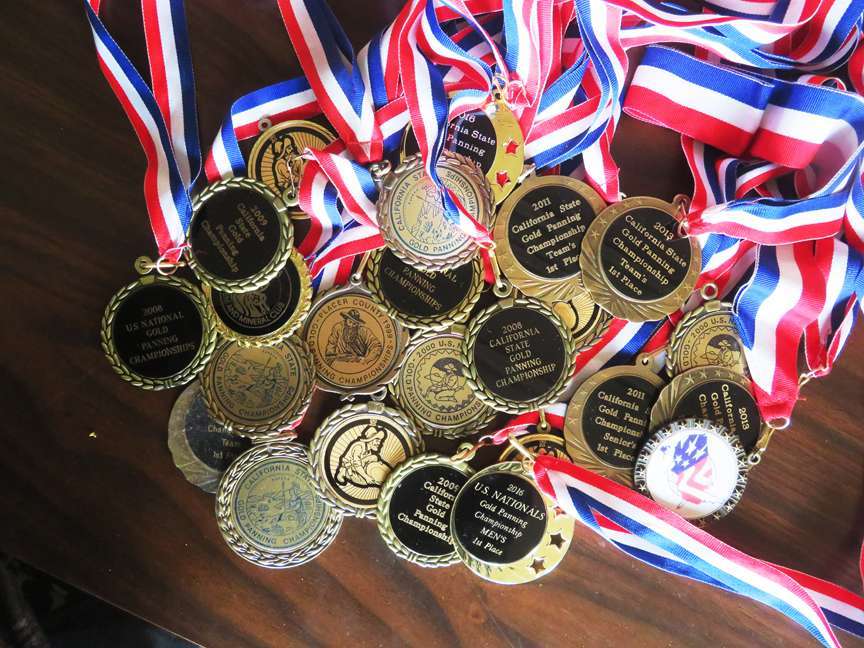September 1st and 2nd 2016
Each year the California State Gold Panning championships arrive with a flurry, and so does the U.S. National Championships, which occurs every two years. Both were held in Foresthill CA, a historic mining town going back to 1849. This championship was part of an annual Heritage Celebration fair, which was filled with booths and concessionaires.
This was two days of gold panning, with just over 250 gold panners trying to win a medal to show they were one of the best of the best. This was a fabulous event that drew a multitude of panners of all ages, from 7 years old to almost 90.
As has always been the case, the competition was loaded with previous champions. Just to name a few were Paul Pekarek, Jim Eakin, Don Coppin, Don Robinson, Michael Matus, Celeice Awtry, Chris Farrell, Denny Dryden, Kathleen Cunningham, Sue Hamann, and the list goes on. There were many more new names competing as well, some who did really well in this competition. The old timers had a run for their money this year. Panners are getting better and better, as was obvious in this Championships.
The Championships have multiple divisions, based upon the classifications of Men’s Skilled, Women’s Skilled, Veterans, Classic, Open, Juniors, Beginners and Teams. Each division has its winners, which are awarded the Gold, Silver, and Bronze medals.
Gold Panning Winners






This competition always uses real gold, and each flake of gold is less than 1/16 of an inch in size. That’s mighty small. For those who don’t know, the panning process requires each contestant to pan down river gravel salted by the judges. The number of flakes varied from 3 to 12, depending upon the event. The panner has no idea of the number of flakes in the gravel and therefore has to pan it down completely, searching for that final small spec. The objective is to pan down all the material from the three-gallon bucket, extract the gold into a small vial, and then signal completion.
There is a five-minute penalty of time added to the panner’s time for every lost flake of gold. In this particular competition, losing gold meant losing out. The amount of gravel to pan varied based upon the Division. The Beginners and Juniors had to pan less material. The gravel took up about 1/3 to 1/2 of a three-gallon bucket so it normally took two or more pans of gravel to finish. Each panner has two people with stopwatches timing them in the preliminaries, semi-finals and finals.
First Day of Gold Panning Competition
All day Saturday, the first day of the event, were the preliminaries in order to determine which 12 panners of each division got to advance to the Sunday semi-finals and finals. Panners could compete in various categories, with a few exceptions. The Juniors and Beginners ended on Saturday with their finals the same day.
Getting through Saturday to be one of the top 12 to advance is the toughest of all. The competition is fierce, and by the end of the day there are lots of panners who get knocked out of the competition and have to wait another year.
On Sunday, each division has the top 12 competing head to head in the semi-finals of six gold panners each. Three of those 6 advance to the finals. Three have to drop out and wait for the next year. The finals then have 6 panners going for the medals. In the finals, the panner better get all the gold or it’s all over for them. Even if you get all the gold in the material, you better be fast, because the competition is against world level gold panners.
By the end of the day Sunday there were a lot of tired panners! By then they could have panned more that 14 times to continue to advance. This was not a picnic! At the end of Sunday, and when the medals were awarded, lots of new panners were on the stands. However, previous champions Paul Pekarek, Don Robinson, Michael Matus, Celeice Awtry, Jim Eakin, Sue Hamann, Don Coppin, and Chris Farrell were still getting their share of the medals. It’s hard to beat the old timers! a historic mining town going back to 1849. This championship was part of an annual Heritage Celebration fair, which was filled with booths and concessionaires.



Until next year!
Don Robinson

